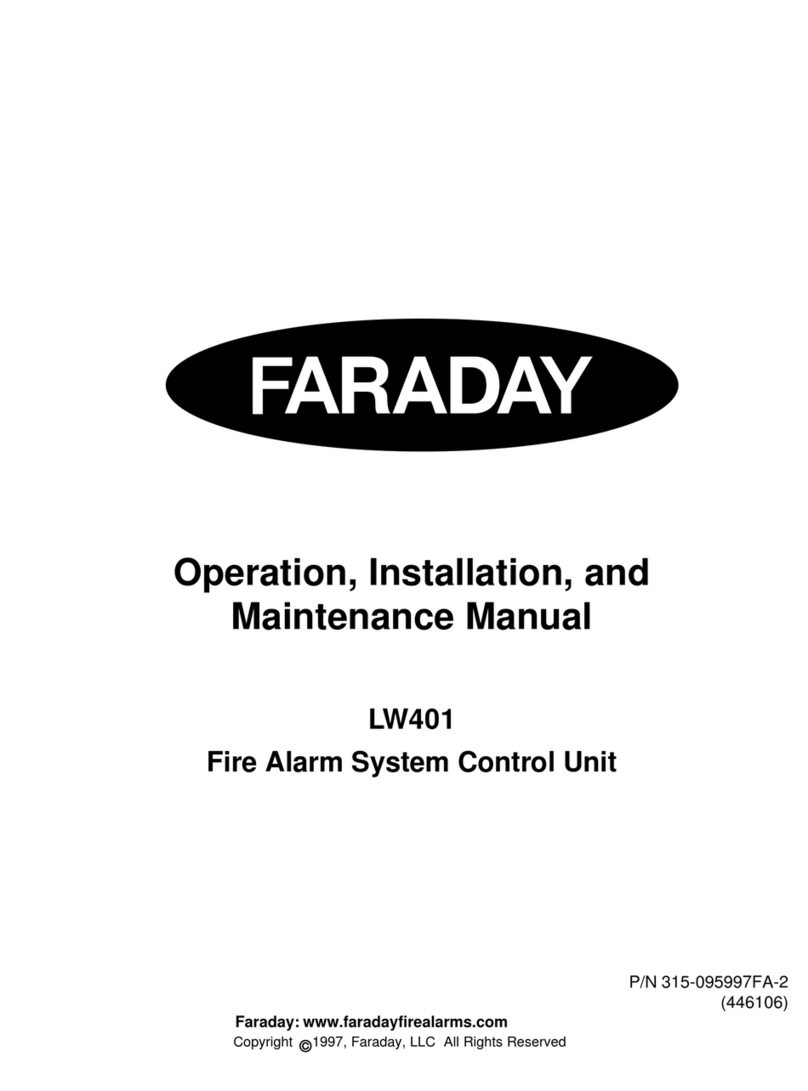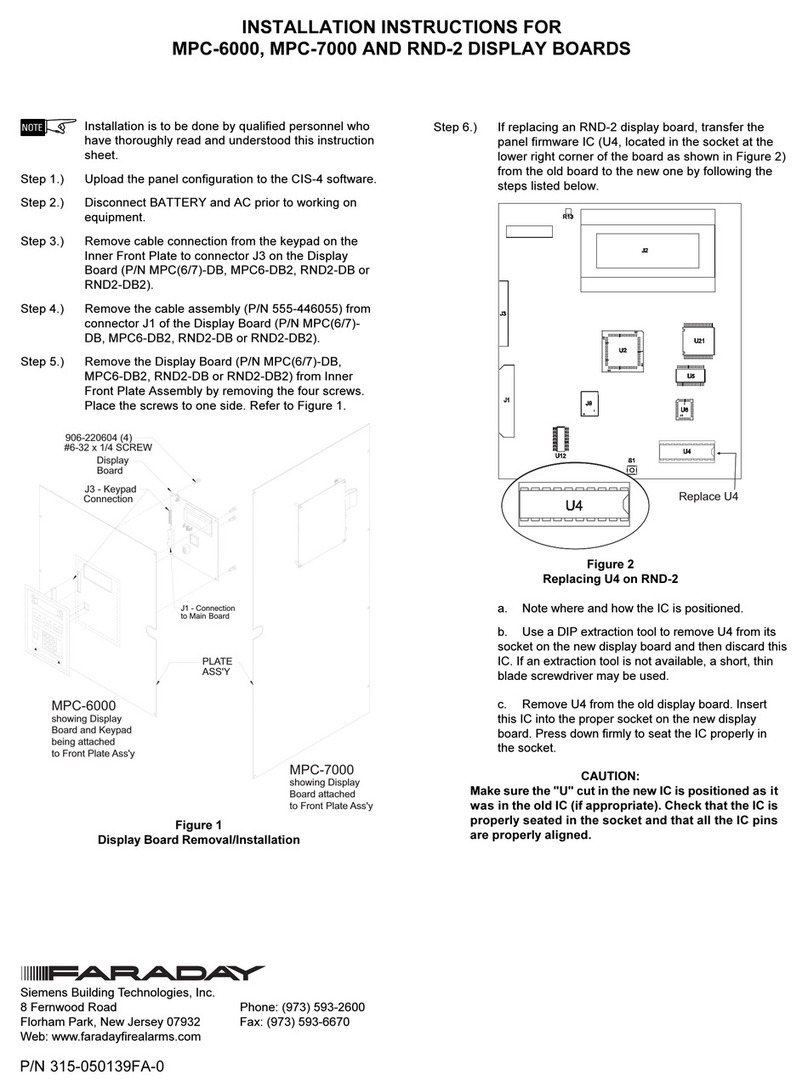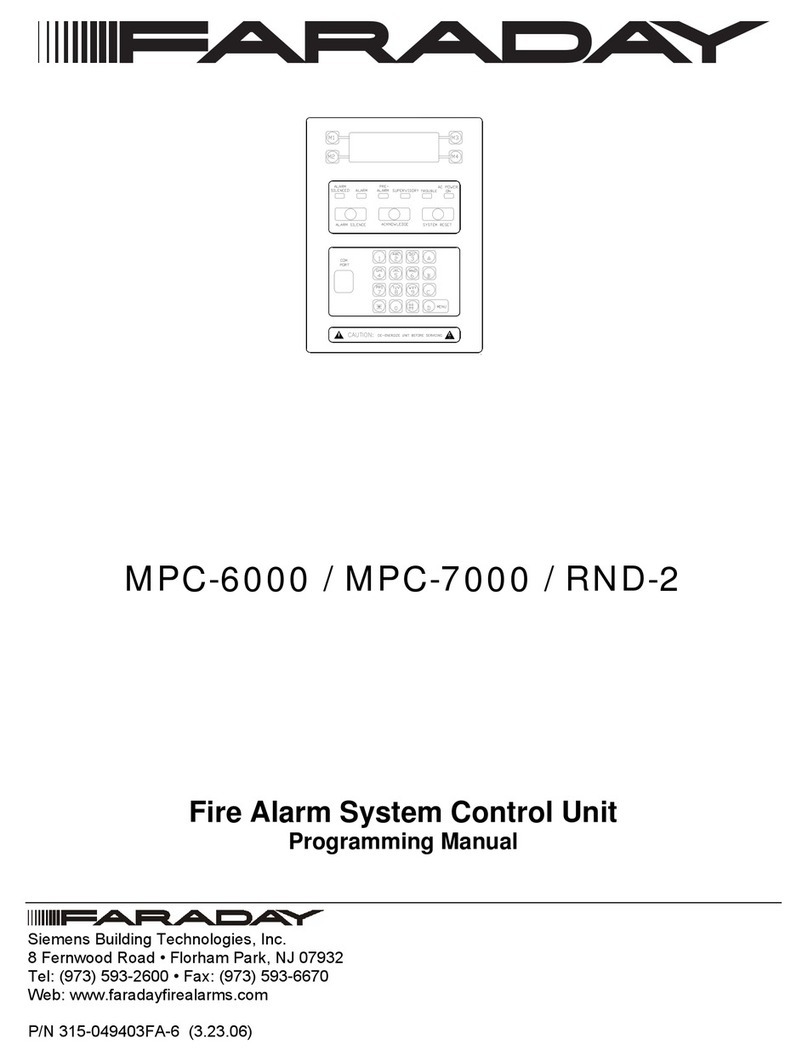
I - 1
The 15220A, Two Zone, and 15240A, Four Zone, Fire Alarm System Control Unit provides manual, automatic,
and waterflow alarm and supervisory service. Zone #1 may be used as a manual, automatic, or waterflow initiating
circuit or it can be programmed to be used with normally open sprinkler supervisory switches. Zone #2 may be used
as a manual, automatic, or waterflow initiating circuit and can also be programmed to be non-silencable for use with
waterflow switches, if required. The control unit has one signal circuit capable of operating up to a total of 2.5A. of
U.L.listedcompatible signals. Thecontrolunit alsoprovidesup to0.3A.of resetable 19-28VDCpowerfor U.L. listed
compatible4-wiresmokedetectors. Theintegralbatterychargeriscapableofcharginguptoa15A.H.,24VDCbattery
setandissupervisedfora disconnected,shorted,orlow(below23VDC)batteryset. Other standardfeaturesinclude
grounddetection,signalsilencing,subsequentalarmsignaling,automaticshortcircuitdisconnectonthesignalcircuit
and trouble buzzer ring back.
The15216Semi-flushTrimisanoptionalfeatureforthe15220Aor15240A FireAlarmSystemControlUnitor14050
Battery Cabinet. The trim allows the cabinet to be mounted up to 3.5" deep into the wall.
ONE OF THE FOLLOWING BATTERY SETS SHOULD BE USED TO SATISFY THE N.F.P.A. REQUIREMENT
OF A SECONDARY AND TROUBLE SIGNAL POWER SUPPLY. SEE SECTION III FOR CALCULATING
BATTERY REQUIREMENTS:
The 14047 Battery Set provides 6 Amp.- Hours of capacity @ 24 volts and mounts in the 15220A or 15240A Fire
Alarm System Control Unit cabinet.
The 14048 Battery Set provides 10 Amp.- Hours of capacity @ 24 volts and mounts in the 15220A or 15240A Fire
Alarm System Control Unit cabinet.
The 14049 Battery Set provides 15 Amp. - Hours of capacity @ 24 volts and mounts in the 14050 Battery Cabinet.
The 14050 Battery Cabinet is used for mounting the 14049 Battery Set. The battery cabinet matches the 15220A
or 15240A Fire Alarm System Control Unit in size, finish, and construction.
The15212RemoteAnnunciatorModuleisanoptionalmoduleforthe15220Aor15240AFireAlarmSystemControl
Unit. Thismoduleprovidesasupervisedannunciatoroutputperzonecapableofdriving 21-28VDCL.E.D.indicators,
a form "C" system trouble contact, and a form "C" general alarm contact. This module also contains a trouble L.E.D.
that will indicate an open condition or activated annunciator output. The form "C" trouble contact is 21-28VDC
powered for driving a 21-28VDC remote trouble unit or it may be programmed dry for other applications.
The 15213A March Time / Temporal Signaling Module isanoptionalmodule for the15220Aor 15240A FireAlarm
System Control Unit. This module provides programming capabilities for the control unit's signal circuit (Note: This
module doesn't provide two additional signal circuits). Circuit #1 can be programmed for steady, march time or
temporal (code 3) signaling. Circuit #2 is non-silencable, intended for steady operation of strobes or other signals
required to be non-silencable.
The 15219 Zone Relay Module is an optional module for the 15220A or 15240A Fire Alarm System Control Unit.
Thismoduleprovidesaform"A"zonealarmcontactperzone,aform"A"generalalarmcontact,andaform"B"general
alarm contact.
The 15209 City Tie Module is an optional module for the 15220A or 15240A Fire Alarm System Control Unit. This
module provides an alarm / trouble transmitter and a form "C" system trouble contact. The module also contains
a city tie disconnect switch and a trouble / off-normal switch L.E.D. The disconnect switch may be activated during
testingorservicingofthesystemtopreventanalarmtransmissionfromthismodule(atroubleoutputwillbegenerated
upon activation of the disconnect switch).
The 15215 City Tie / Auxiliary Relay Module is an optional module for the 15220A or 15240A Fire Alarm System
ControlUnit. Thismodule providesasupervisory / troubletransmitter,an alarm/trouble transmitterora local energy
cityboxtripcircuit,aform"C"systemtroublecontact,andaform"C"generalalarmcontact. Themodulealsocontains
a city tie / relay disconnect switch and a trouble / off-normal switch L.E.D. The disconnect switch may be activated
duringtestingorservicingofthesystemtopreventasupervisoryoranalarm outputfromthismodule(atroubleoutput
will be generated upon activation of the disconnect switch).
































